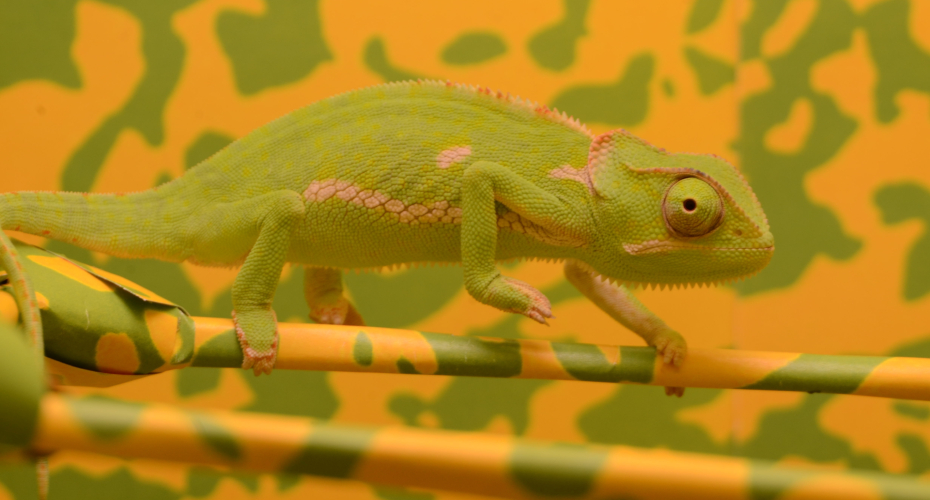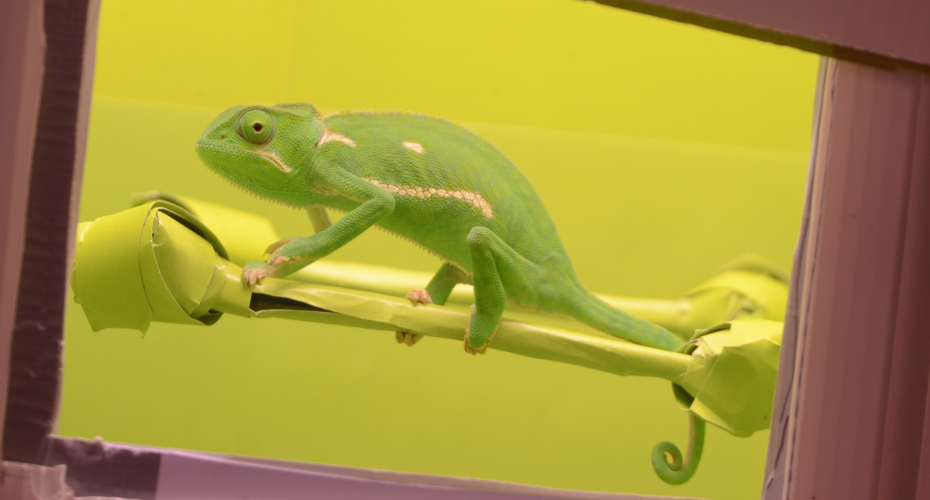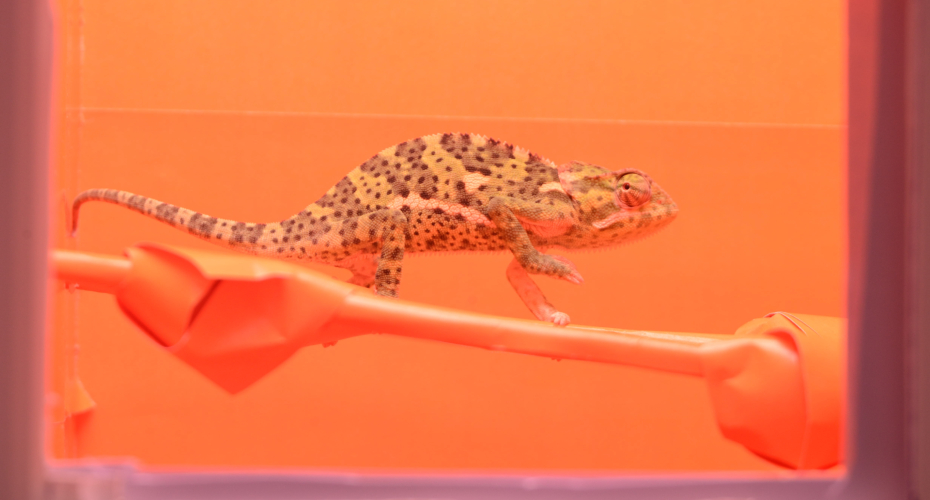Despite their image as masters of camouflage, it has long been assumed in science that chameleons change colour to communicate with one another or in response to predators.
But now new research has revealed that the lizards do alter their skin colour to blend into their background - just as long as it's certain colours or shades.
In one of the first laboratory studies of its kind, researchers have identified that the flap-necked chameleon can match yellow, orange, and black backgrounds with much greater accuracy and speed than those that are green or blue.
The study, led by ecologists at the University of Exeter, Cornwall, further reveals that chameleons do not adjust to patterns, in contrast to their portrayal in popular culture.

This research, funded by the University and a European Research Council Consolidator Grant, has been published this week in the latest edition of Biology Letters.
"Popular culture often depicts chameleons as masters of camouflage, changing their colour to match their backgrounds," says Dr Jolyon Troscianko of Exeter's Centre for Ecology and Conservation. "We know that they use colour changing to communicate with one another, such as during the breeding season, and to regulate their body temperature. But there has been surprisingly little investigation into their approach to concealment beyond some studies on predator threat."
Chameleons can alter the colour of their skin in one of two ways: either through pigment movement or structural colour changes within specialised skin cells. And among the different species, the flap-necked chameleon (Chamaeleo dilepis) is renowned for the speed with which it can do this.
For the experiment, eight chameleons were placed individually in a pen that was lined with paper of different colours, hues or pattern treatments. The team then took photographs at timed intervals over two 'runs' to measure any change in the animal.

This process was repeated across four colours (yellow, yellow-green, orange and blue-green), three uniform greyscale experiments (black, white, and grey), and six pattern experiments.
"We selected hues that were slightly more colourful than typical natural backgrounds to elicit a stronger response from the chameleons, while still preserving biological plausibility," said Tom Major, who conducted the research at Exeter but is now part of the Department of Life and Environmental Sciences at Bournemouth University. "Yellow-green and blue-green colours were selected as those which other chameleons can produce, and orange and yellow could be of ecological relevance to flap-necked chameleons, which experience pronounced dry seasons where leaves and grasses may change to these colours."
The results revealed that the chameleons responded quickly to blacks, reducing their luminescence to blend into the background much faster than when it was white, all within a matter of minutes.
With the colours, the lizards responded steadily and accurately to yellow, but more slowly and with greater variance to orange. And for yellow-green and blue-green colours, which are closer to the chameleon's natural appearance, the lizards either didn't change or did so slowly.
The test also revealed that none of the animals sought to match the pattern, regardless of its colour or scale.

All of this analysis took into account what is termed 'predator vision modelling' - creating a picture as to whether or not a potential predator, such as the fiscal shrike bird, would be able to distinguish the chameleon against the background.
"This ability to change colour is likely to have evolved to enable chameleons to move through diverse habitats, in wet and dry seasons, but remain hidden from their predators," adds Alexia Hesten, also formerly of Exeter, but now of the School of Biological and Environmental Sciences, at Liverpool John Moores University "But a picture is emerging - based upon these results and what we know of other species - that tells us that these famed abilities have their limits and that maybe chameleons favour the kinds of locations that they instinctively know they can match."






